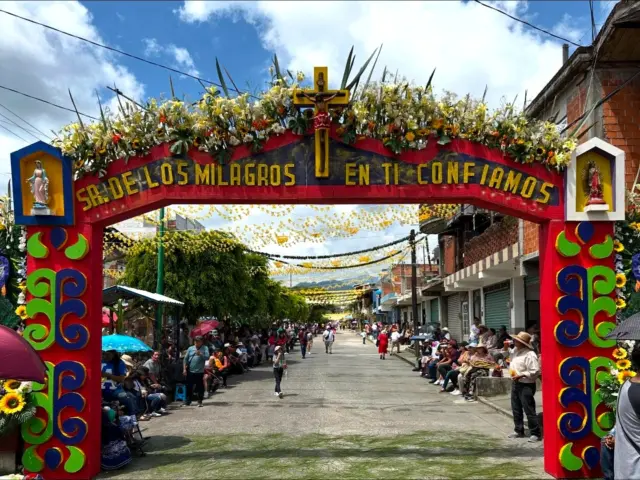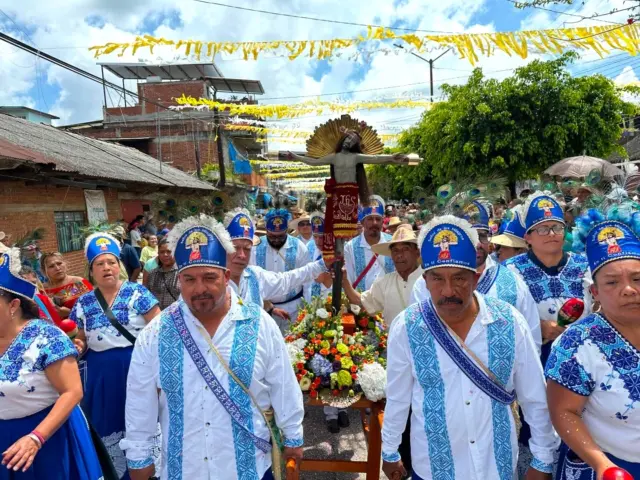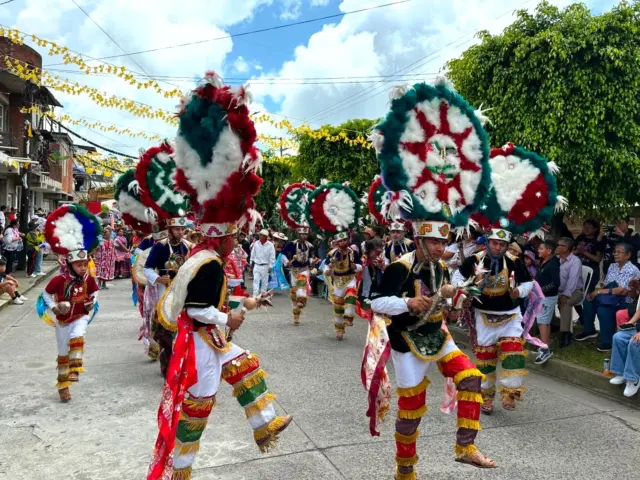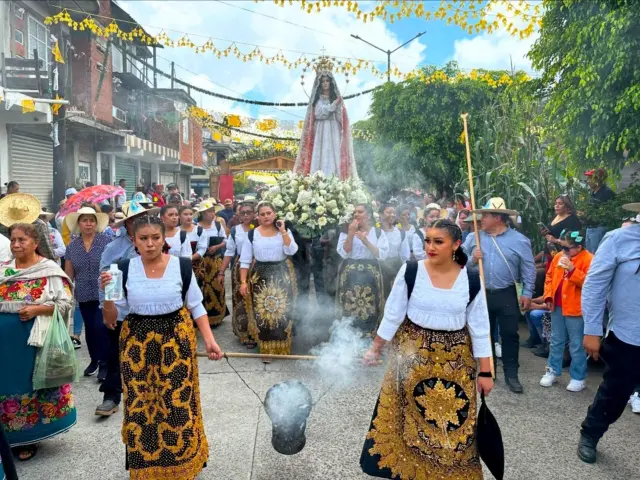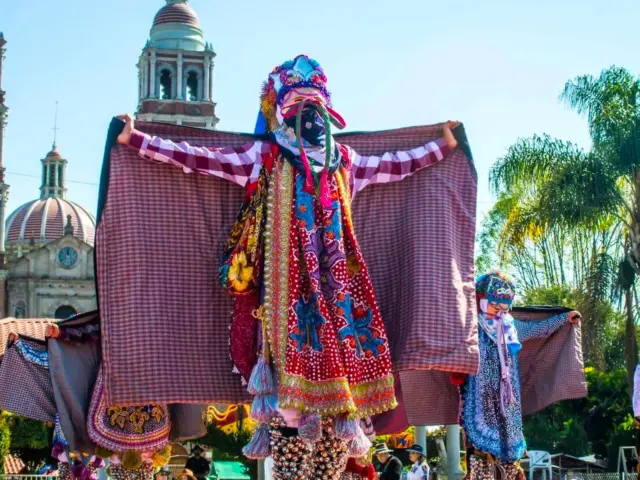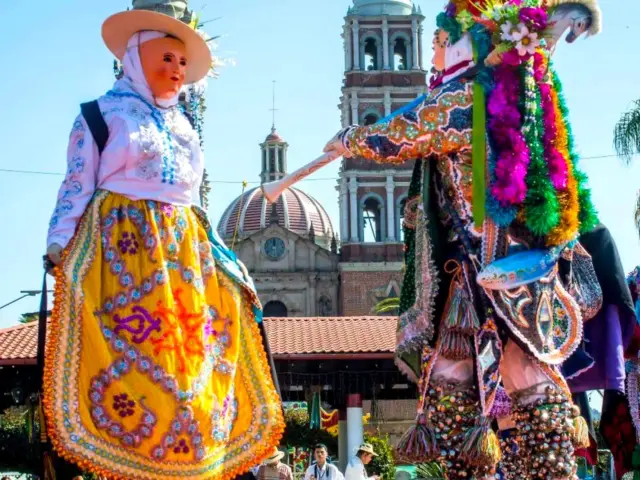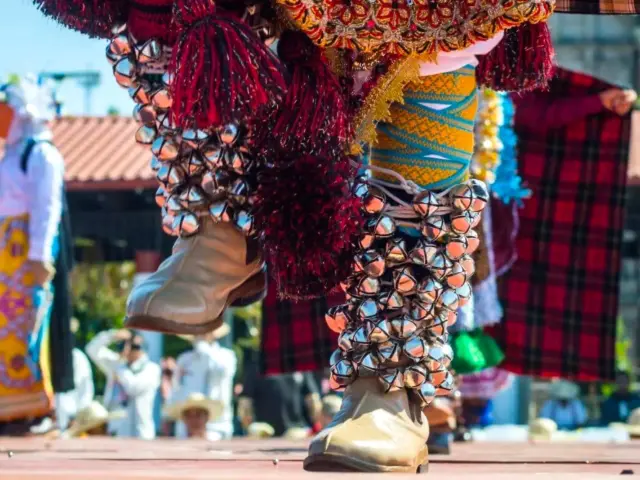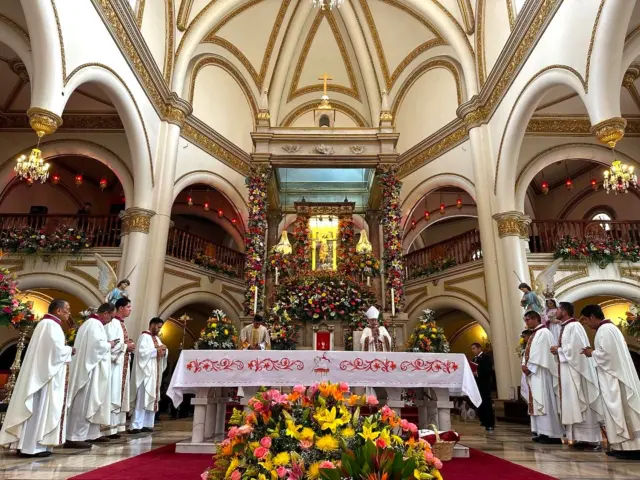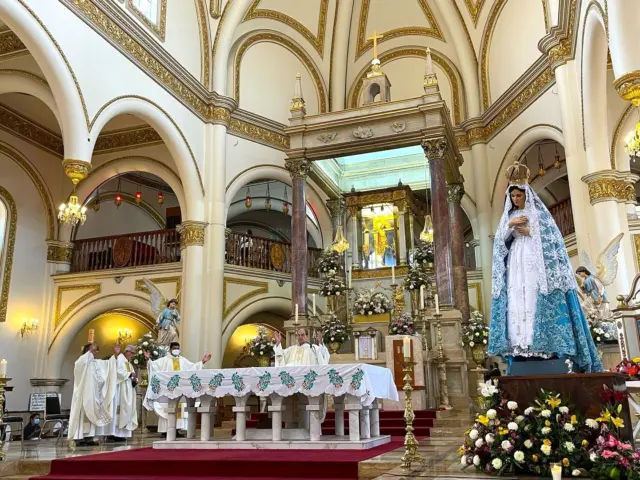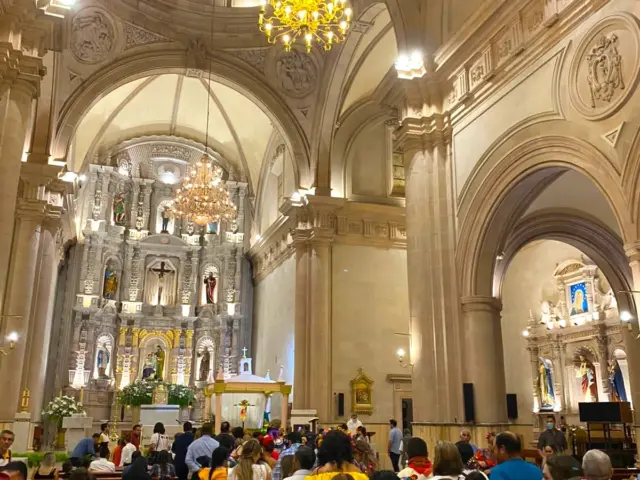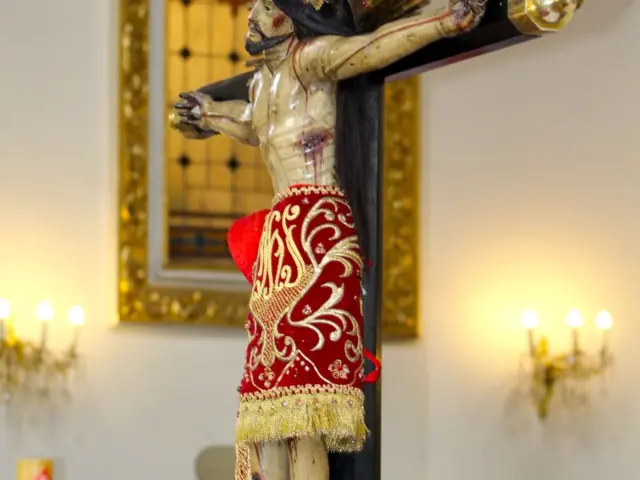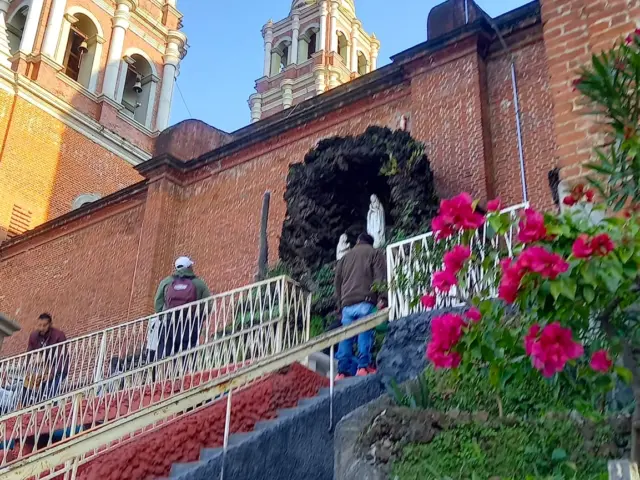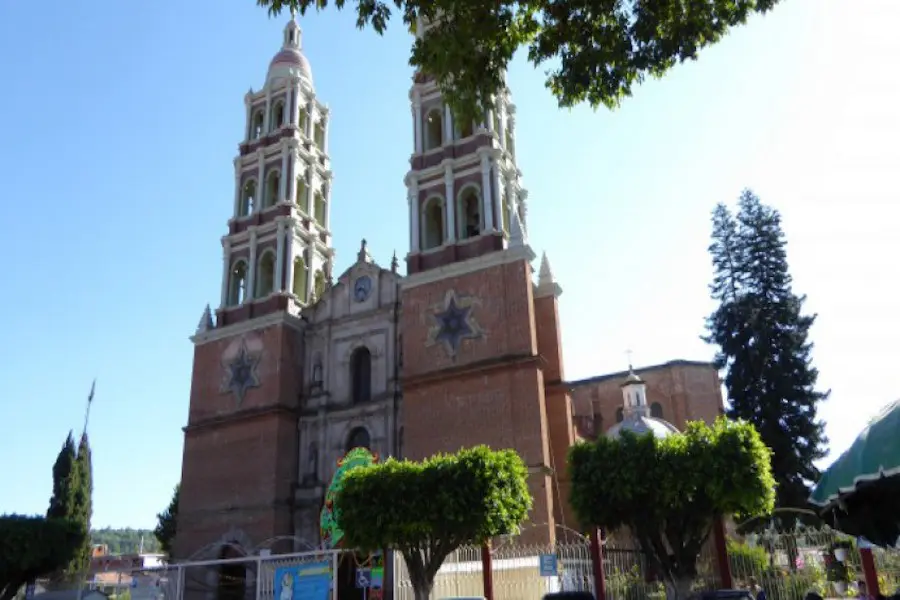
Adress
Nuevo San Juan Parangaricutiro, Michoacán, México.
GPS
19.41677570313, -102.12919592857
KNOW MORE PLACES
VISITA OTRAS LOCALIDADES
It begins with jubilees, novenas and pilgrimages headed by the image of Christ; accompanied by music bands and dances of “Los Negritos”, “Los Viejitos” and “Los Pastores” to the foot of the main altar.
Nuevo San Juan or San Juan Nuevo is the town founded by the Purépecha Indians who were forced to relocate after evacuating San Juan de las Colchas (or Old San Juan Parangaricutiro) due to the birth of the Paricutín Volcano.
Se sabe que el Señor de los Milagros cuenta con fieles seguidores en todo México, Sudamérica y Estados Unidos. A lo largo de los festejos llegan a contabilizarse más de 70 mil visitantes. La imagen perteneció al templo de San Juan Parangaricutiro, el pueblo que sepultó en su erupción el Volcán Paricutín a mediados del siglo XX.
The image of the Lord of Miracles is made of sugarcane paste, a pre-Hispanic artisanal technique originating from the Purépecha culture. It represents a crucified Christ and, as in the case of other religious figures made by indigenous hands, shows a marked care in the representation of the wounds and the gesture of pain caused by the torture.
In San Juan, a saying was born about impossible causes, which goes like this: “what you ask for will not be achieved even if you enter San Juan Dancing.” In this way, the recognized miraculous capacity of the Lord of Miracles is indirectly underlined.
The legend of the miracle
During the colonial era, the fame of Christ spread. It was said that an unknown person from outside left him in the temple of San Juan Parangaricutiro and that the Christ of Miracles was very miraculous.
Everyone believed him except the local chief. But one day his son became seriously ill and, finding no cure, he turned his eyes to Christ and promised him that if he saved his son, he would dance for him in gratitude, just as according to the Bible King David danced to worship God. The child was cured and the chief kept his word and danced a dance.
The community witnessed the event and this form of veneration, request for favors and gratitude for them, gained strength.
In San Juan, people dance all year round to ask for favors, but on September 14th in particular this devotion gains strength. After September 14th, there are celebrations such as the “Octava” or “Fiesta Chica” (Small Party), a celebration eight days after the “Fiesta Grande”.
